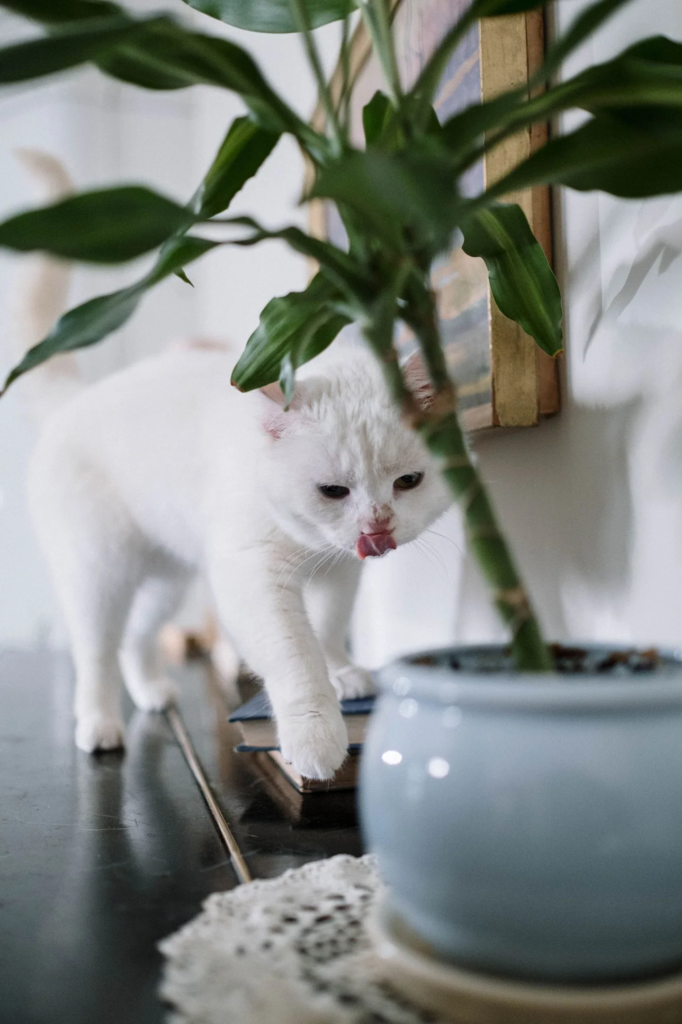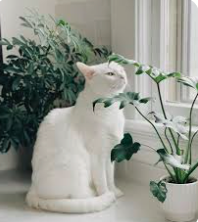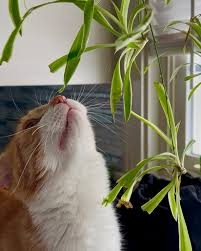How Can Cats and Plants Coexist at Home?
Cats and plants can be a challenging combination. I’ve lost count of how many plants my cat has destroyed.
Cats and plants can coexist peacefully by choosing cat-friendly plants, using deterrents, and creating a safe environment for both. This approach ensures a harmonious home for pets and plants alike.

The key to success lies in understanding cat behavior and plant toxicity. As someone who loves both cats and plants, I’ve learned how to balance these two passions.
What Plants Are Safe for Cats?
Not all plants are safe for cats. Some can be toxic, causing serious health issues if ingested.
Safe plants for cats include catnip, wheat grass, and spider plants. Avoid toxic plants like lilies and snake plants to ensure your cat’s safety.

Understanding Plant Toxicity
Some plants are highly toxic to cats. Lilies, for example, can cause kidney failure if ingested. Snake plants and oleander are also dangerous. On the other hand, catnip, wheat grass, and spider plants are safe and can even provide benefits for your cat.
When selecting plants, always check their toxicity. The ASPCA has a list of toxic and non-toxic plants that can guide your choices. I’ve found that keeping a few cat-friendly plants around not only adds beauty to my home but also keeps my cat entertained.
Choosing Cat-Friendly Plants
Cat-friendly plants are not just safe; they can also provide stimulation for your cat. Catnip, for instance, is a natural stimulant that encourages playful behavior. Wheat grass is another favorite among cats, offering a healthy snack and a fun activity.
| Plant | Toxicity to Cats | Benefits for Cats |
|---|---|---|
| Catnip | Safe | Stimulates playful behavior |
| Wheat Grass | Safe | Provides a healthy snack |
| Spider Plant | Safe | Adds beauty to the home |
| Lilies | Toxic | Avoid completely |
| Snake Plant | Toxic | Avoid completely |
How Can You Deter Cats from Eating Plants?
Cats are naturally curious, and they might still try to nibble on plants. Deterrents can help prevent this behavior.
Deterrents like citrus sprays, sticky tape, and physical barriers can discourage cats from eating plants. Consistency is key when using these methods.

Using Deterrents Effectively
Citrus sprays are a popular deterrent because cats dislike the smell of citrus. Spray plants with a citrus-based spray to keep cats away. Sticky tape is another effective option; cats don’t like the sticky sensation on their paws. Physical barriers, like placing plants out of reach or using plant covers, can also work well.
Consistency is important when using deterrents. If you only occasionally apply deterrents, your cat may not associate them with the undesired behavior. I’ve found that combining multiple deterrents works best.
Creating a Safe Environment
Creating a safe environment for both cats and plants involves more than just deterrents. It’s about designing spaces where both can thrive.
Designing Spaces for Cats and Plants
When designing your home, consider spaces where cats can play and plants can grow without interference. Cat towers or shelves can keep plants out of reach while providing your cat with a view. I’ve set up a cat tower near a window, which allows my cat to watch birds while keeping my plants safe.
| Deterrent Method | Effectiveness | Cost | Ease of Use |
|---|---|---|---|
| Citrus Sprays | High | Medium | Easy |
| Sticky Tape | High | Low | Easy |
| Physical Barriers | Very High | Medium | Requires Setup |
How Can You Keep Your Cat Entertained and Away from Plants?
Keeping your cat entertained is crucial for preventing unwanted plant nibbling.
Engage your cat with toys, scratching posts, and interactive games to keep them away from plants. A bored cat is more likely to seek out plants for entertainment.
Engaging Your Cat with Toys and Activities
Cats need stimulation to stay happy and healthy. Toys like feather wands or laser pointers provide exercise and entertainment. Scratching posts are essential for maintaining nail health and providing a scratching outlet. Interactive games, such as puzzle toys filled with treats, challenge your cat’s mind and keep them occupied.
Creating a Cat-Friendly Zone
Designate a cat-friendly zone in your home where your cat can play freely without accessing plants. This area should include toys, scratching posts, and comfortable resting spots. I’ve created a cat room in my home, filled with toys and scratching surfaces, which keeps my cat happy and away from my plants.
Managing Stress and Boredom
Sometimes, cats seek out plants due to stress or boredom. Providing a calm environment and plenty of activities can reduce these factors. I’ve found that adding a few catnip plants to my cat’s play area helps reduce stress and encourages playful behavior.
| Activity | Effectiveness in Reducing Plant Interest | Cost | Ease of Setup |
|---|---|---|---|
| Toys (Feather Wands, Laser Pointers) | High | Medium | Easy |
| Scratching Posts | Very High | Medium | Easy |
| Interactive Games (Puzzle Toys) | Very High | Medium | Easy |
| Cat-Friendly Zones | Very High | Medium-High | Requires Setup |
Conclusion
Cats and plants can coexist peacefully with the right strategies. By choosing safe plants, using deterrents, and keeping your cat entertained, you can enjoy both the beauty of plants and the companionship of your cat.

